Sculptures and Oscar-winning costumes at NC Museum of Art detail the Black experience
The N.C. Museum of Art is hosting two exhibitions this spring and summer by artists exploring the pain and triumph of the Black experience in different but complementary ways.
In a show that opened earlier in March, Michael Richards’ sculptures and drawings show African Americans fighting, failing and rising to fight again to defy cultural forces.
An exhibition of Ruth E. Carter’s costume designs that opens this weekend portrays black culture as its own formidable force.
The showing of Carter’s work is especially timely since on March 12, the designer became the first Black woman to win multiple Oscars. In 2019 she was the first Black woman to win for costume design, for her work on the Marvel Comics “Black Panther” film. She won this year for the costumes in the series’ second film, “Black Panther: Wakanda Forever.”
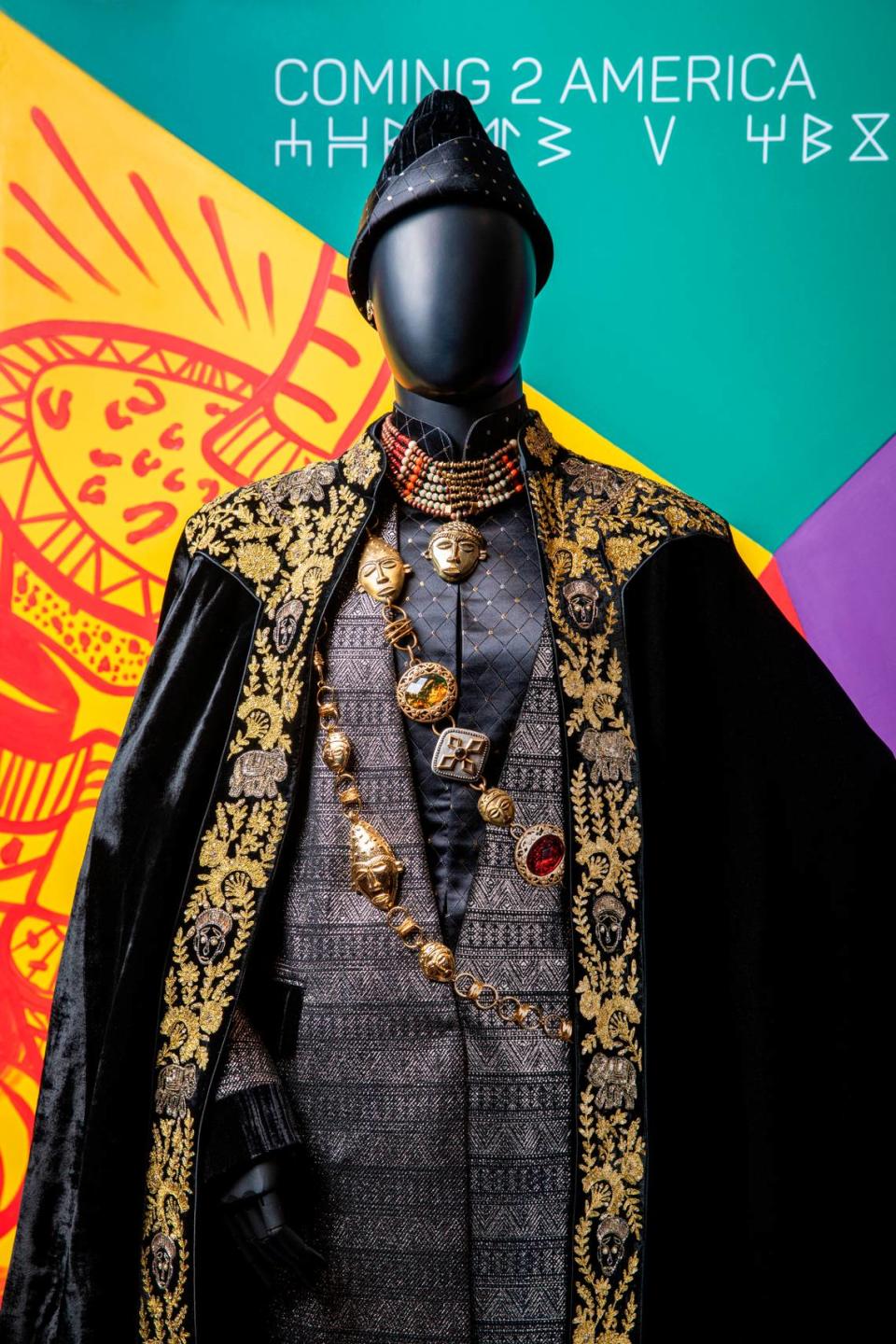
‘Roots’ to ‘Selma’ to ‘Black Panther’
The traveling exhibition, which came to Raleigh from Seattle, is a sampling of Carter’s work so far for film, television and online gaming, which she began in the 1980s.
It includes pieces from “Coming 2 America,” “I’m Gonna Git You Sucka,” “Malcolm X,” “Shaft,” “Roots,” “Selma,” “Amistad,” Lebron James “Fortnite,” “Dolemite Is My Name,” “Do the Right Thing,” “Black Panther,” “Black Panther: Wakanda Forever” and “The Butler.”
The dozens of garments displayed show Carter’s inventiveness in using shape, texture, color, historical reference and futurism to create characters and tell stories.
Born in Massachusetts in 1960, Carter has said she learned to sew from spending after-school hours at the Boys & Girls Club and practicing on her mother’s home sewing machine, a White brand cabinet model that’s part of the exhibition. She graduated from Hampton University, a Virginia HBCU, with a degree in theater arts and a plan to pursue acting, but instead became immersed in costuming. She was living in Los Angeles designing for theater productions and dance studios when she met filmmaker Spike Lee and agreed to design the costumes for his second movie, “School Daze.”

Early on, Carter set about creating believable clothing that would visually inform a scene without overpowering it: for historical movies or shows, styles that aren’t replicas but could have existed in the time and place they represent, and for those set in centuries yet to come, “Afrofuturistic” designs that carry ancient traditions to fanciful futures.
Maya Brooks, assistant curator of contemporary art at the museum and the Southeastern Center for Contemporary Art, helped coordinate the Carter exhibition, fitting the displays to the available space and arranging the layout to make the most of the juxtapositions of costume groups.
For instance, Brooks said, having the “Roots” TV miniseries costumes directly opposite those from the movie “Selma” lets the viewer see the Black experience in the U.S. from slavery to emancipation through the 1960s struggle for Civil Rights.
Ruth Carter’s relentless research
As with those from other productions on display, the clothing silently conveys clues about characters’ roles in the stories and in the worlds and times from which they are drawn.
Carter, a relentless researcher, learned that slaveholders would buy large bolts of fabric, often a plain or printed cotton muslin or a rough wool, to use to clothe the people they enslaved, meaning that the same fabrics might appear in different forms in the garments of men, women and children.
Women and girls of the slaveholders’ households, meanwhile, were more likely to have elaborate dresses made of imported silks, taffeta, brocade or velvet, historians say.
Beyond the choice of fabrics, Carter uses details such as construction, trim and wear to tell the viewer more about a character’s life, such as the sweet cotton frocks worn by the young Black women in “Selma” versus the tuxedo and beaded satin ivory gown worn by the Rev. Martin Luther King Jr. and his wife, Coretta Scott King.
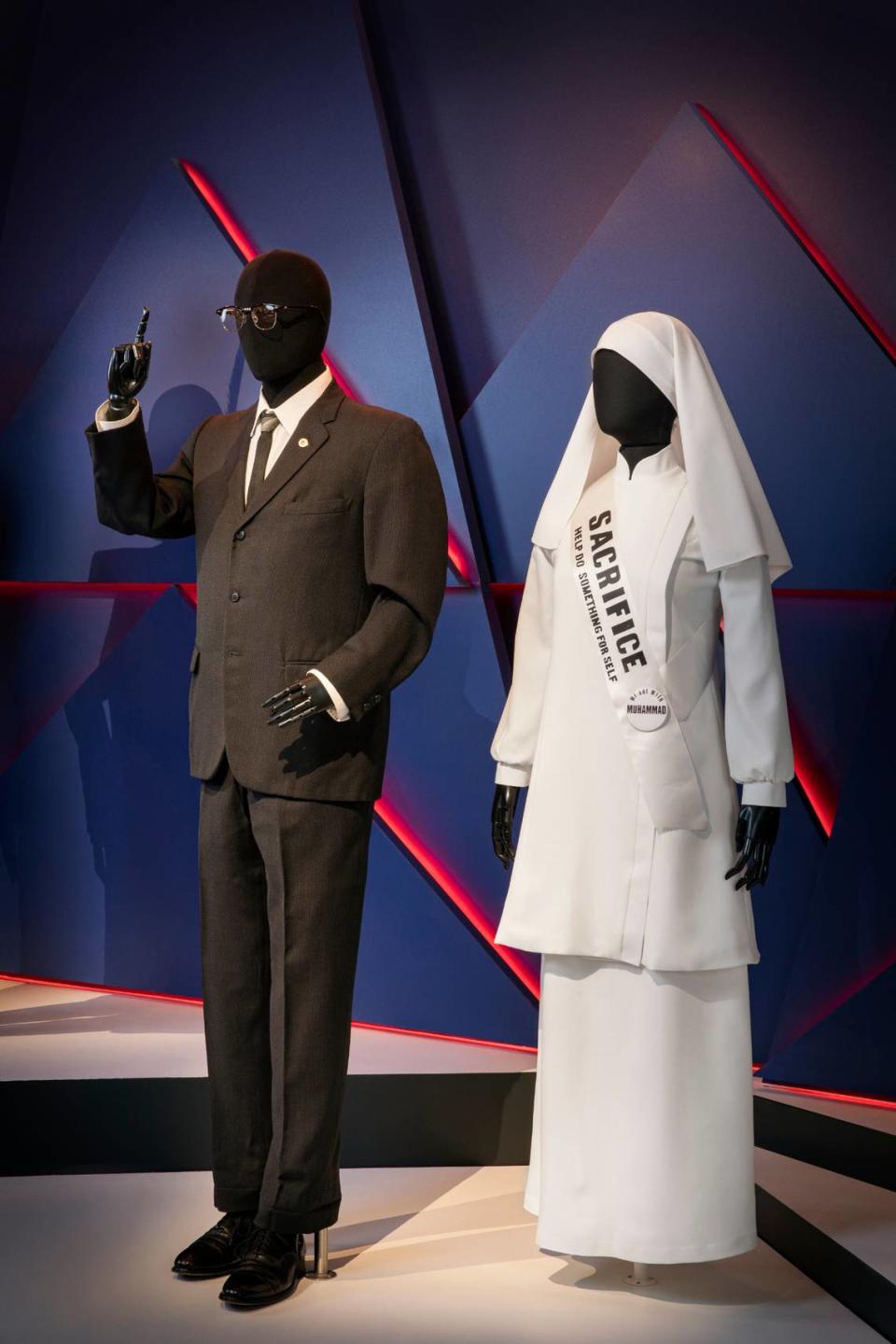
Brooks said the Carter exhibition will draw a range of visitors, including movie fans from the two generations spanned by Carter’s career, as well as history buffs, fashion fans and textile enthusiasts.
“For this kind of show, people will gravitate first toward the visuals,” Brooks said, such as the bright colors and rich textures or the beads and the bits of leather and metal. But as they walk through the exhibition and see, for example, Malcolm X’s evolution from street hustler to Islamist leader as it plays out in his attire, “There is a whole story that happens there,” Brooks said.
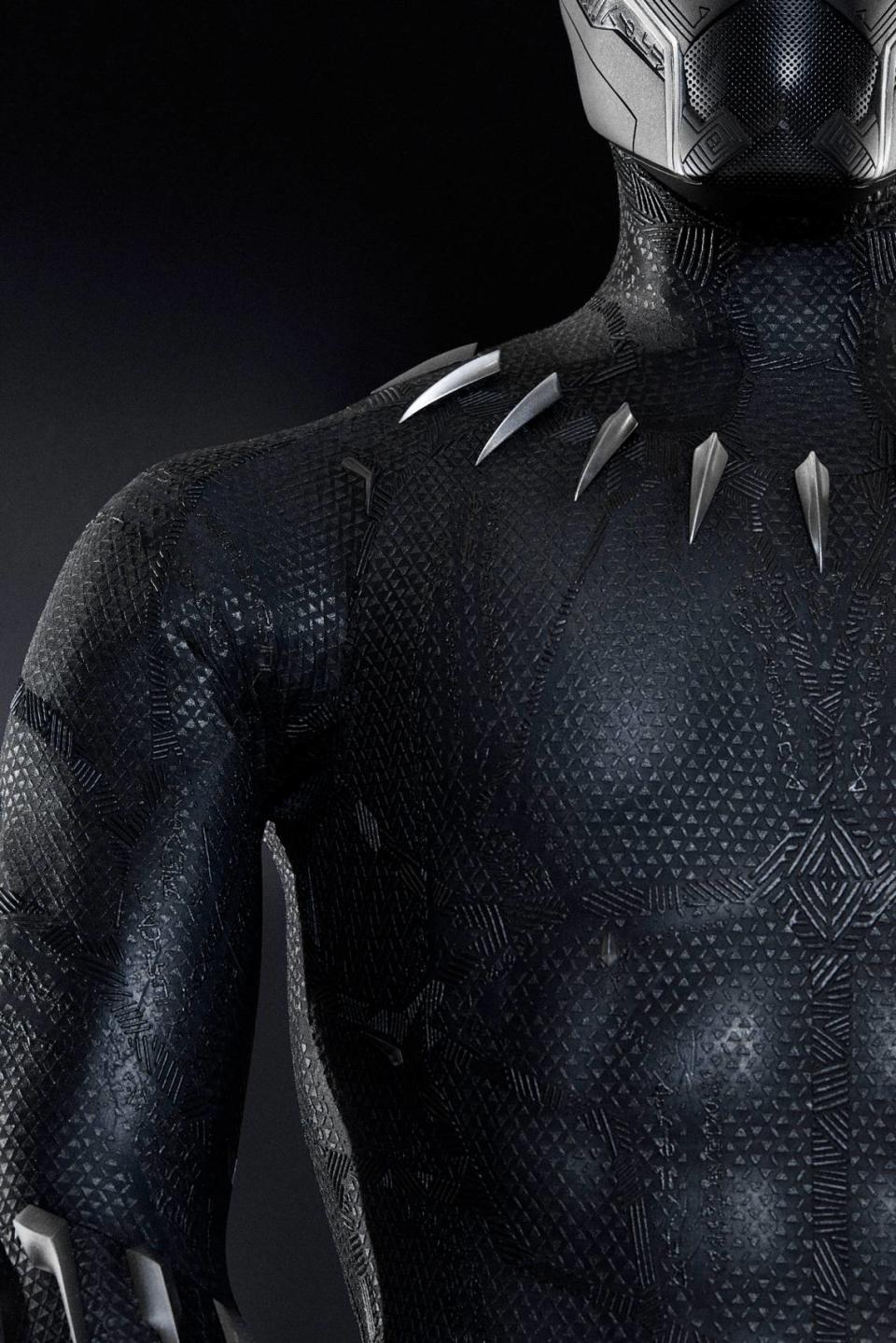
Echoes of Sept. 11 in Michael Richards’ art
The Michael Richards exhibition in a neighboring gallery at the museum tells another story, both of the artist and his work.
Richards was a rising star in the art world when he was killed in the terrorist attacks on the World Trade Center on Sept. 11, 2001. He is believed to have been in his studio on the 92nd floor of the North Tower when it was struck by a plane, the first building hit in the attack.
At the time, Richards had been working with the N.C. Museum of Art to include two of his sculptures in an exhibition to celebrate the 100th anniversary of the Wright brothers’ first flight in North Carolina. When the show opened in 2003, it featured Richards’ “Tar Baby vs. St. Sebastian” and “Winged.”
“Tar Baby” has been on continuous display at the museum since 2003 and is part of the new, larger show. It is jarringly prescient; it’s a cast of Richards’ body dressed in the uniform of a Tuskegee Airman being pierced by the tips of incoming aircraft.
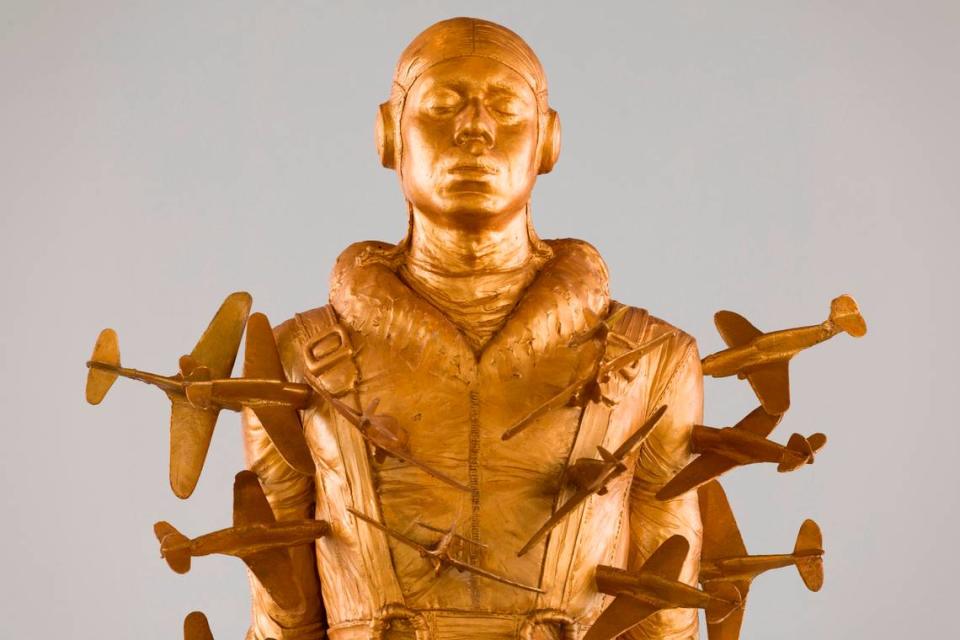
“Winged” is back for the exhibition as well, along with a video of Richards creating the form for the piece by repeatedly piercing his own arm and suspending feathers on strings from his flesh.
Though he’s gone, Richards — or likenesses of his body in whole or part — can be found throughout the new show, which includes pieces not pulled together in one collection before.
Richards returns to favorite themes in his works, particularly using images of flight to explore the ways in which humans soar and fall, literally and figuratively, in the face of social injustice and oppression.
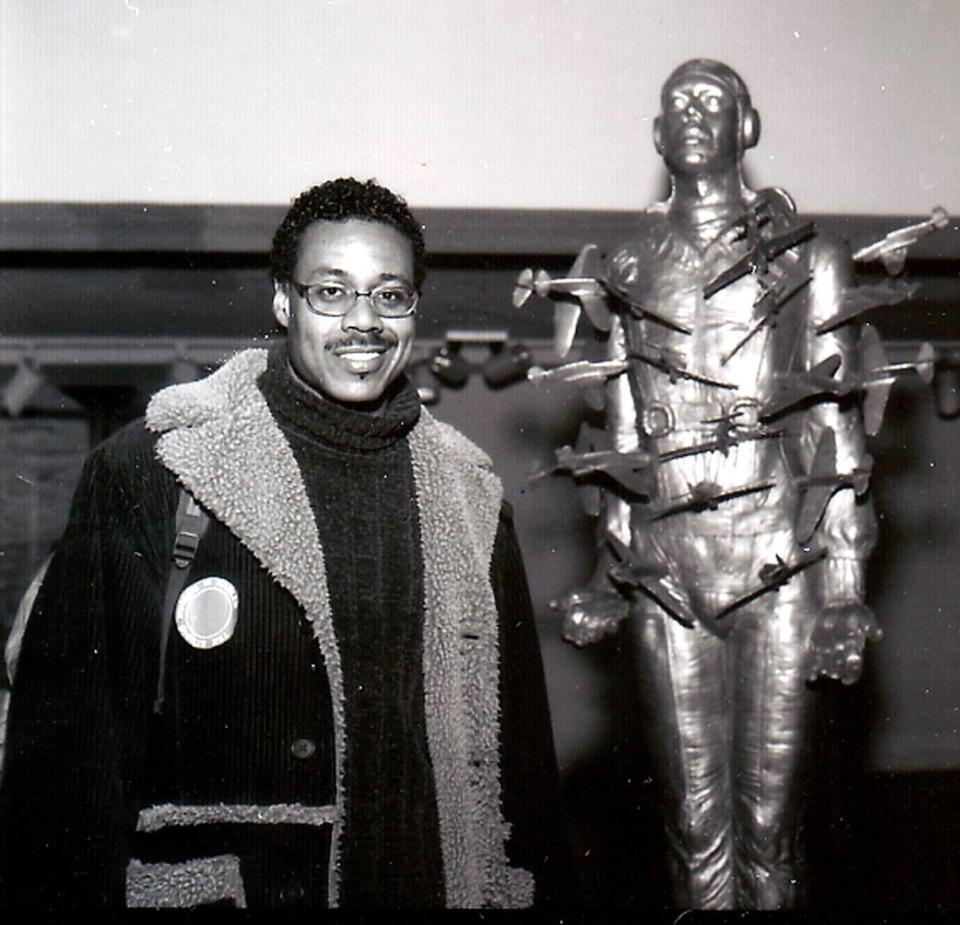
The show is named for one of the last sculptures Richards completed — called “Are You Down?” — that consists of three downed pilots, all cast from Richards’ body. To appreciate the pieces, visitors have to look down at them or squat on the ground at their level.
In a catalog describing the piece, the museum quotes Richards as saying, “The pilots serve as a symbol of failed transcendence and lost faith, escaping the pull of gravity but always forced back to the ground, lost navigators seeking home.”
About the exhibits
▪ “Ruth E. Carter: Afrofuturism in Costume Design” runs April 1 through Aug. 6. It’s free for members and those ages 21 and under; $20 for adults; $17 for seniors and members of the military.
▪ “Michael Richards: Are You Down?” runs through July 23 and is free.
Both are the East Building of the N.C. Museum of Art.

 Yahoo Movies
Yahoo Movies 
